ETRIDIAZOLE
Synonym(s):5-Ethoxy-3-trichloromethyl-1,2,4-thiadiazole;Ethazol
- CAS NO.:2593-15-9
- Empirical Formula: C5H5Cl3N2OS
- Molecular Weight: 247.53
- MDL number: MFCD00071812
- EINECS: 219-991-8
- SAFETY DATA SHEET (SDS)
- Update Date: 2024-12-18 13:37:16

What is ETRIDIAZOLE?
Description
Etridiazole (20) was first described in 1969 and is a contact fungicide for control of soilborne diseases caused by Pythium and Phytophthora. Formulated as a WP (Terrazole), etridiazole may be used in a preventive program for control of Pythium blight in turf and of damping-off in ornamentals. It is also formulated in mixture with pentachloronitrobenzene (quintozene) as Terraclor Super X, which is applied in-furrow to cotton for control of seedling diseases (Rhizoctonia, Pythium, Fusarium). Application rates in cotton are equivalent to 1 to 1.5 and 0.26 to 0.39 kg ai ha?1 for PCNB and etridiazole, respectively.
Chemical properties
Pale-yellow liquid when pure or reddish-brown liquid or semisolid as a technical product. Mild odor.
The Uses of ETRIDIAZOLE
Etridiazole is a contact fungicide with protective and curative action that is used to control Phytophthora and Pythium spp. in ornamentals, cotton, peanuts, vegetables and turf.
The Uses of ETRIDIAZOLE
5-Ethoxy-3-(trichloromethyl)-1,2,4-thiadiazole is a fungicide that can be incorporated into the soil or compost to control Phytophthora spp. and Pythium spp. Useful in cannabis testing kits as a component of pesticide mixes (P698235).
Definition
ChEBI: A member of the class of thiadiazoles that is 1,2,4-thiadiazole which is substituted at positions 3 and 5 by trichloromethyl and ethoxy groups, respectively. A fungicide, it has been used particularly for the control of Phytophthora and <ital Pythium species in soils.
Agricultural Uses
Fungicide: Etridiazole is a fungicide used in some countries as a seed treatment on barley, beans, corn, cotton, peanuts, peas, sorghum, soybeans, safflower, and wheat. It is also used on cotton for in-furrow application at planting, on ornamental plants and shrubs by horticultural nurseries, on non-bearing citrus and non-bearing coffee, and for golf course fairways, tees and greens. Some states hold Special Local Need registrations for use on tobacco transplants.
Trade name
AATERRA®; BANROT® (With Thiophanate-methyl); DWELL®[C]; ETHAZOLE®; 4-WAY®; KOBAN®; MF-344®; OLIN MATHIESON® 2,424; OM® 2424; PANSOIL®; TERRACHLOR-SUPER X® (with Pentachloronitrobenzene); TERRACLOR SUPER X® (with Pentachloronitrobenzene); TERRACOAT®; TERRAFLO®; TERRAMASTER®; TRUBAN®
Potential Exposure
Aromatic hydrocarbon; Thiazole fungicide Etridiazole is a fungicide used in some countries as a seed treatment on barley, beans, corn, cotton, peanuts, peas, sorghum, soybeans, safflower, and wheat. It is also used on cotton for in-furrow application at planting, on ornamental plants and shrubs by horticultural nurseries, on nonbearing citrus and nonbearing coffee, and for golf course fairways, tees and greens. Some states hold Special Local Need registrations for use on tobacco transplants
Metabolic pathway
The main metabolic pathways of etridiazole in mammals are dechlorination of the 3-trichloromethyl moiety followed by oxidation yielding the carboxylic acid derivative or glutathione-mediated dechlorination. Catabolism of the glutathione conjugate via the mercapturic acid pathway affords the cysteine conjugate that is in turn N-acetylated to give the mercapturic acid.
Shipping
UN2810 Toxic liquids, organic, n.o.s., Hazard Class: 6.1; Labels: 6.1-Poisonous materials, Technical Name Required. Military driver shall be given full and complete information regarding shipment and conditions in case of emergency. AR 50-6 deals specifically with the shipment of chemical agents. Shipments of agent will be escorted in accordance with AR 740-32.
Degradation
The DT50 for hydrolysis of etridiazole is 103 days (25 °C, pH 6). The compound was hardly decomposed at 20 °C by sunlight over 7 days (PM). The rate of hydrolysis of etridiazole increased with pH and temperature and the only product was 3-carboxy-5-ethoxy-1,2,4-thiadiazole (2) (EPA, 1980).
Toxicity evaluation
Etridiazole has low acute toxicity toward mammals
(rat: oral LD50 1,100 mg/kg; rabbit: dermal LD50 >
5,000 mg/kg; rat: inhalation LC50 (4 h) 5.7 mg/L), and
birds (mallard duck: LC50 1,650 mg/kg; bobwhite quail:
LC50 > 5,000 mg/kg). It is also nonteratogenic. However,
chronic administration to rats was associated with an
increased incidence of thyroid follicular cell tumors, and
etridiazole (Terrazole) is included by the EPA in its list of
Group B2 carcinogens.
The only noteworthy ecotoxicological effect concerns
the aquatic toxicity of the combination product, Terraclor
Super X, which is highly toxic towards both fish and
Daphnia. However, this can be attributed more to the
PCNB component (bluegill sunfish: LC50 0.1 mg/L, EPA
designation “highly toxic”) than to etridiazole (LC50
3.27 mg/L, “moderately toxic”). Risk in practice would be mitigated by the use pattern of the product involving
in-furrow soil application.
Incompatibilities
Diazo compounds can detonate. This applies in particular to organic azides that have been sensitized by the addition of metal salts or strong acids. Toxic gases are formed by mixing materials of this class with acids, aldehydes, amides, carbamates, cyanides, inorganic fluorides, halogenated organics, isocyanates, ketones, metals, nitrides, peroxides, phenols, epoxides, acyl halides, and strong oxidizing or reducing agents. Flammable gases are formed by mixing materials in this group with alkali metals. Explosive combination can occur with strong oxidizing agents, metal salts, peroxides, and sulfides. This chemical is sensitive to prolonged exposure to heat. This chemical is incompatible with strong oxidizing agents
Waste Disposal
Incineration would be an effective disposal procedure where permitted. If an efficient incinerator is not available, the product should be mixed with large amounts of combustible material and contact with the smoke should be avoided. In accordance with 40CFR165, follow recommendations for the disposal of pesticides and pesticide containers
Properties of ETRIDIAZOLE
| Melting point: | 19.9°C |
| Boiling point: | 254.65°C (rough estimate) |
| Density | 1.503 |
| vapor pressure | 1.43 Pa (25 °C) |
| refractive index | 1.5650 (estimate) |
| Flash point: | 154.5 °C |
| storage temp. | 0-6°C |
| solubility | DMSO (Sparingly), Methanol (Slightly) |
| form | Liquid |
| Water Solubility | 117 mg l-1(25 °C) |
| pka | 2.77 (very weak base) |
| color | Colourless |
| CAS DataBase Reference | 2593-15-9 |
| EPA Substance Registry System | Etridiazole (2593-15-9) |
Safety information for ETRIDIAZOLE
| Signal word | Warning |
| Pictogram(s) |
 Exclamation Mark Irritant GHS07  Health Hazard GHS08  Environment GHS09 |
| GHS Hazard Statements |
H302:Acute toxicity,oral H317:Sensitisation, Skin H351:Carcinogenicity H410:Hazardous to the aquatic environment, long-term hazard |
| Precautionary Statement Codes |
P201:Obtain special instructions before use. P273:Avoid release to the environment. P280:Wear protective gloves/protective clothing/eye protection/face protection. P301+P312:IF SWALLOWED: call a POISON CENTER or doctor/physician IF you feel unwell. P302+P352:IF ON SKIN: wash with plenty of soap and water. P308+P313:IF exposed or concerned: Get medical advice/attention. |
Computed Descriptors for ETRIDIAZOLE
| InChIKey | KQTVWCSONPJJPE-UHFFFAOYSA-N |
New Products
(S)-3-Aminobutanenitrile hydrochloride 4-Methylphenylacetic acid N-Boc-D-alaninol N-BOC-D/L-ALANINOL Tert-butyl bis(2-chloroethyl)carbamate 3-Morpholino-1-(4-nitrophenyl)-5,6-dihydropyridin- 2(1H)-one Furan-2,5-Dicarboxylic Acid Tropic acid 1-Bromo-3,5-Di-Tert-Butylbenzene S-2-CHLORO PROPIONIC ACID ETHYL ISOCYANOACETATE 2-Bromo-1,3-Bis(Dimethylamino)Trimethinium Hexafluorophosphate 4-IODO BENZOIC ACID 3-NITRO-2-METHYL ANILINE 1-(2,4-DICHLOROPHENYL) ETHANAMINE (2-Hydroxyphenyl)acetonitrile 4-Bromopyrazole 2-(Cyanocyclohexyl)acetic acid 4-methoxy-3,5-dinitropyridine 1-(4-(aminomethyl)benzyl)urea hydrochloride 2-aminopropyl benzoate hydrochloride diethyl 2-(2-((tertbutoxycarbonyl)amino) ethyl)malonate tert-butyl 4- (ureidomethyl)benzylcarbamate Ethyl-2-chloro((4-methoxyphenyl)hydrazono)acetateRelated products of tetrahydrofuran
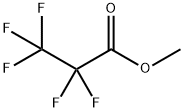
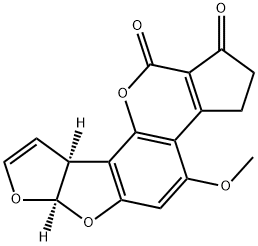
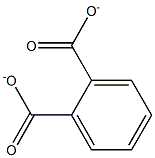
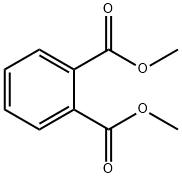

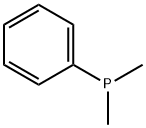
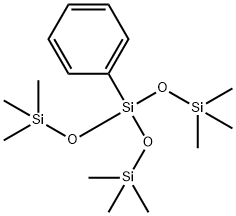

You may like
-
 Etridiazole CAS 2593-15-9View Details
Etridiazole CAS 2593-15-9View Details
2593-15-9 -
 Etridiazole CAS 2593-15-9View Details
Etridiazole CAS 2593-15-9View Details
2593-15-9 -
 1975-50-4 98%View Details
1975-50-4 98%View Details
1975-50-4 -
 2-HYDROXY BENZYL ALCOHOL 98%View Details
2-HYDROXY BENZYL ALCOHOL 98%View Details
90-01-7 -
 2-Chloro-1,3-Bis(Dimethylamino)Trimethinium Hexafluorophosphate 221615-75-4 98%View Details
2-Chloro-1,3-Bis(Dimethylamino)Trimethinium Hexafluorophosphate 221615-75-4 98%View Details
221615-75-4 -
 61397-56-6 CIS BROMO BENZOATE 98%View Details
61397-56-6 CIS BROMO BENZOATE 98%View Details
61397-56-6 -
 14714-50-2 (2-Hydroxyphenyl)acetonitrile 98+View Details
14714-50-2 (2-Hydroxyphenyl)acetonitrile 98+View Details
14714-50-2 -
 118753-70-1 98+View Details
118753-70-1 98+View Details
118753-70-1